设计的言、象、意
成执设计作为本届美国IDA 大奖(International Design Awards)建筑类年度最佳设计和商业类金奖得主,近日主办方对成执设计创始人、总建筑师李杰先生进行了专访。
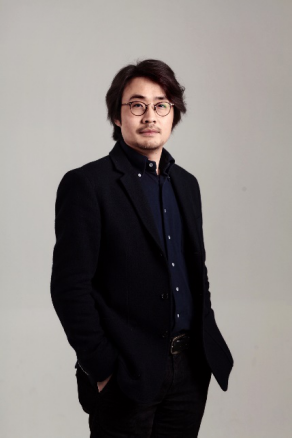

01
人们叫您设计领军人,您为什么觉得能够获得这个称号?
People call you a design hero, why do you think you earned this title?
得知获得这个奖,对于中国本土设计师的我来说深感荣耀,由于多年对设计的坚持不懈,及评委会睿智和公正的评价,才能得到如此褒奖。这个项目从木材的物质层面出发,提取传统结构形式,进行尺度重构,从而构筑成“前卫”的建筑,象征着中国现代木构建筑的兴起与发展。
Winning the IDA Awards is a great honor for a native Chinese designer, and I’d like to attribute this honor to my unwavering devotion to design for all these years, and also to the wise and impartial IDA committee. The winning project leverages the material qualities of wood, draws on traditional architectural structures and forms, and resets dimensions, thereby fashioning an “avant-garde” work that represents the rise and development of modern Chinese wood architecture.
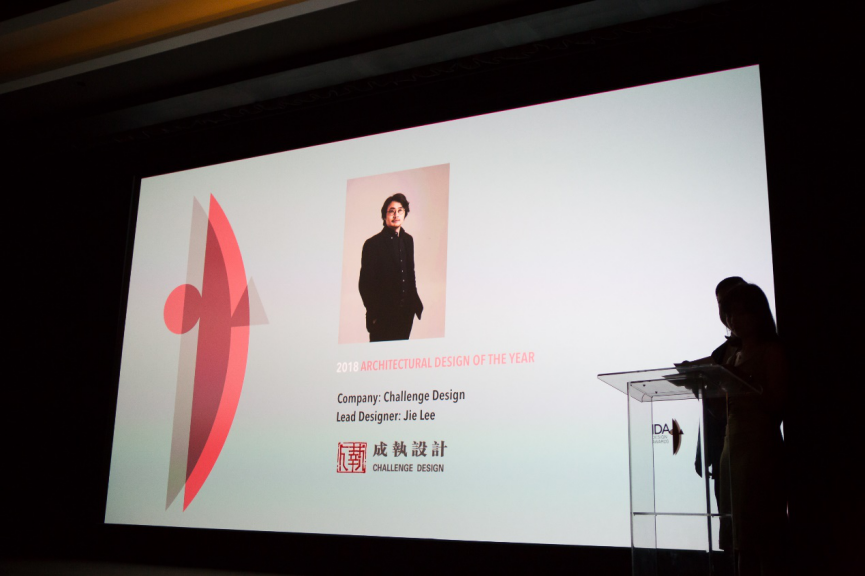
02
您是如何发现您想要从事建筑设计的?请您谈谈建筑领域在中国近几年的发展。
How did you discover that you wanted to work with design and architecture, and how do you feel this field has developed in China over the years?
近几十年,中国成为了全球最大的“设计舞台”与“建造工厂”,推动着本土创作的迅猛前进前进,一日千里。建筑设计需要考虑的问题包括功能性、科学性、经济性、真实性、社会性等众多方面,受到的限制不计其数,在这些限制下还能完成一个建筑精品这是对设计师的极大考验及挑战。在经过多年的探索和磨炼后,我的创作有了更多的前进方向,也希望人们能感受得到建筑背后的文明与文化,以及呈现其间的世界观和价值观,为城市的繁荣与发展添上浓墨重彩的一笔。
In recent decades, China has become the largest “stage for design” and “manufacturing factory” across the globe, and that has propelled its native creativity forward at an overwhelmingly high speed. Architectural design has to consider multiple factors such as functionality, scientific rigor, economic concerns, authenticity and social nature. Bound by a myriad of fetters and chains, designers may find it a supreme test and huge challenge to finally produce an outstanding work. For me, years of exploration and practice have occasioned more possibilities for my architectural pursuits, through which I hope to lead people into the depth of civilization and culture behind architecture, illuminating its underlying worldviews and values, and making a marked contribution to the prosperity and development of cities.
03
您出生并成长在中国,毕业于南昌大学。设计这条路容易吗?您是如何发挥内在创造力的?
You were born and raised in China, graduating from Nanchang University. Was it easy to pursue your chosen path in design and explore your inner creativity?
如我之前所述,设计总是一条蜿蜒曲折的道路。在学校中我们能受到基础的教育,离开学校后,需要时间的沉淀与对世界的深度思索。建筑是文化的躯体,文化是建筑的精髓。世界是日新月异的,但现代建筑是对于地域文化的理解和表达,需要从自然要素与人文要素综合作用中提取元素,如气候、资源、习俗等,设计是对这些要素抽象化的领悟与意境化的创造。
As I said earlier, design is a path full of twists and turns. At school, we receive an education on the basics. After graduation, we need time to learn more and must also engage in deep thinking. Architecture is a body in which culture lives as the soul. Despite the drastic changes happening every day, modern architecture securely hangs on to regional cultures by trying to understand and represent them. It is an abstract conclusion extracted from all the natural and cultural elements of a region, such as its climate, resources and customs, and it is a world of images that conveys profound meaning.
04
由贵公司设计并获奖的原麓社区中心是非常有艺术价值的项目,您认为最主要的优势是什么?
Your winning project, the Yuanlu Community Center in Chongqing, is a wonderful work of art. What would you say are its main strengths?
这个项目最主要的是体现了建筑空间与哲学反思之间的联系。我们塑造的是建筑的真实性,认为美学乐趣不是感官上直接反映的乐趣,而是依附于思考过程并受其影响的。这就是我们所说的建筑理性与建筑美学的哲学思考。由于“木构”蕴含的传统特质,给予了设计更多的可能性。从建筑与自然的关系和人文环境的连接出发,根植于木材的物质性和文化意涵,塑造出木构架空间有序的逻辑性和真实性,以求达到建筑、自然和文脉的和谐共生。设计施工一体化,体现了我们对于建筑与技术的关系全新的思考。运用参数化设计和BIM等先进技术快速建造的同时,更是为了服务“木构”的设计表达,强调对自然的尊重和其背后的人文情怀。
This project mainly reflects the links between architectural space and philosophical thinking. We are careful to make our architecture authentic, and we think that the enjoyment of beauty is not directly felt by the senses, but rather is something dependent on and influenced by thinking. That is what we call a philosophical perspective on the relationship between architectural rationality and architectural aesthetics. The traditional traits of the wood structure make diversified designs possible. Based on the links between architecture and its natural and cultural surroundings, this project, by leveraging the material qualities and cultural connotations of wood, manages to achieve an orderly logic and authenticity in the wooden frame, and thus harmoniously combines architecture, nature and culture.
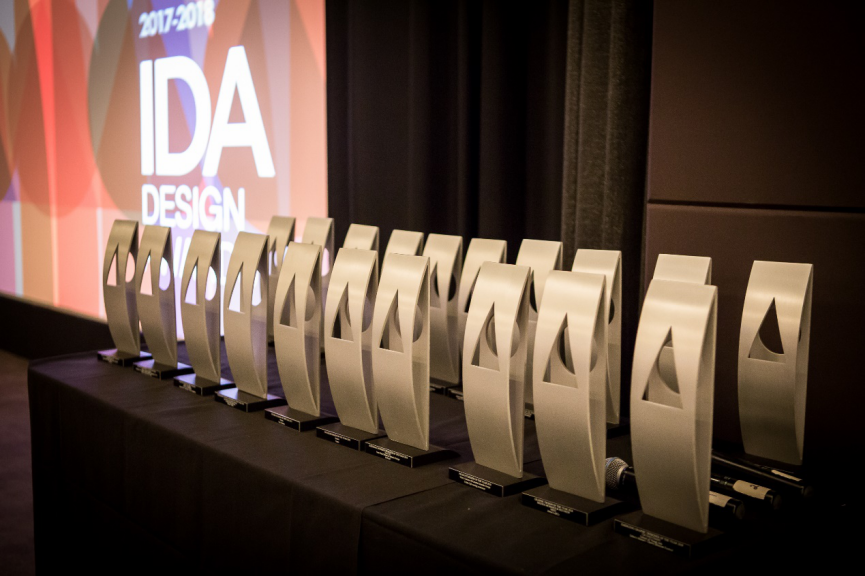

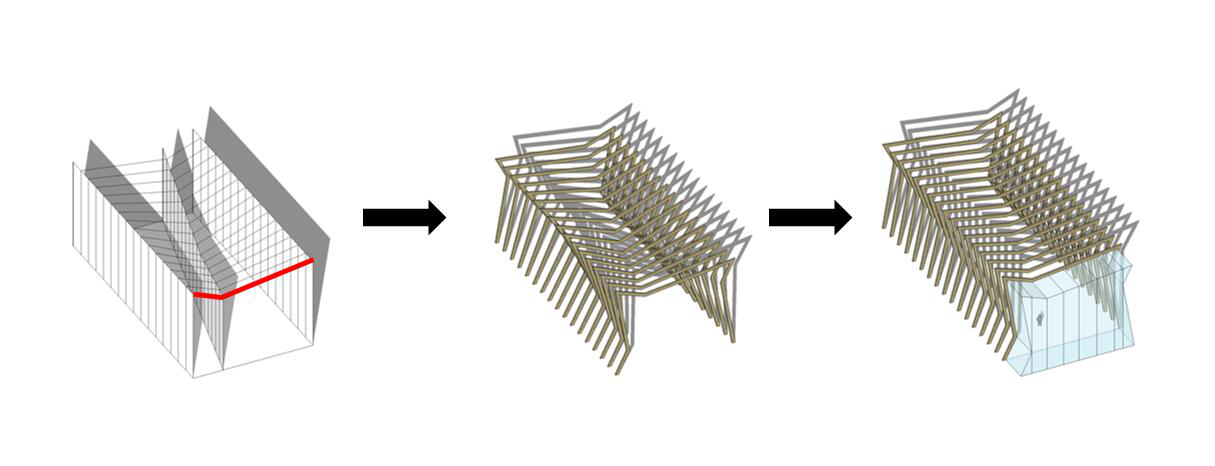
05
您在规划社区中心时最重要的是什么?遇到的最大挑战是什么?
What was most important for you when planning the community center, and what were the biggest challenges you faced in this project?
项目毗邻重庆龙兴古镇,御临河边,远山起伏,东侧的景观最佳。作为对环境的回应,细化了御临河的景观条件,将三个体量不同的盒子并列置于山坡上,垂直于滨河道路,以期达到滨河景观及远山的最佳观赏视角。这里的缝隙不同于前者水平向上的手法,而是在垂直方向进行了突破。形体结合山坡地势错落有致地排列,形成一个个庭院与天井,像是不同大小的缝隙,在获得建筑内部领域感的同时,也将建筑向自然打开,塑造出场所内外的邻接性和开放性。建筑的真实性是此项目设计的哲学理念也是最大的挑战。
空间与材料、结构密不可分,空间是由构件组成,我们选用胶合木结构创造了高度超过10m,跨度超过16m的大胯空间,在秩序感、韵律感中蕴含着空间的张力。表皮依附于建筑的结构形式,将内域外连贯成为一个整体。在铝板表皮的设计中,我们通过调节每块铝板的折角变化,让光线的明和暗跃然“板”上,体现出自然的变化,从而建筑的结构、表皮与环境形成真实并和谐的状态。
The project neighbors the ancient town of Longxing in Chongqing. It borders the Yulin River and mirrors the distant rolling hills. Its eastern side commands the best view. As a response to the topography around the Yulin River, the project is divided between three box-like buildings of different sizes, which are arranged side by side along the slope and perpendicular to the road along the Yulin River, so as to gain a perfect view of the riverside landscapes and the distant hills. The interstices don’t run horizontally. Instead, they are distributed vertically, fitting into the topography of the slope and neatly formulating sequential interstitial courtyards and patios. It seems as if the various-sized interstices, while claiming a territory inside the architecture, are also opening it to nature, and thus connecting the inside and the outside in an open spirit. The entire project is in pursuit of a “philosophy of authenticity,” which is also its biggest challenge.
Space is inseparable from materials and structure, and is composed of building components. In this project we used glulam to create large spaces that extend over 10 meters high and 16 meters wide. Within the orderliness and rhythm there is also spatial tension. The exterior of the architecture, adapting to its structural form, unites the warping surfaces into a whole. When designing aluminum plates for the skin, we made sure the angles of each plate were well adjusted, so as to allow even the minutest changes of light to be captured by the “plates” and thus reflecting the changes of nature. In that manner the structure of the architecture, its surface and its surroundings manage to achieve an authentic, harmonious co-existence.
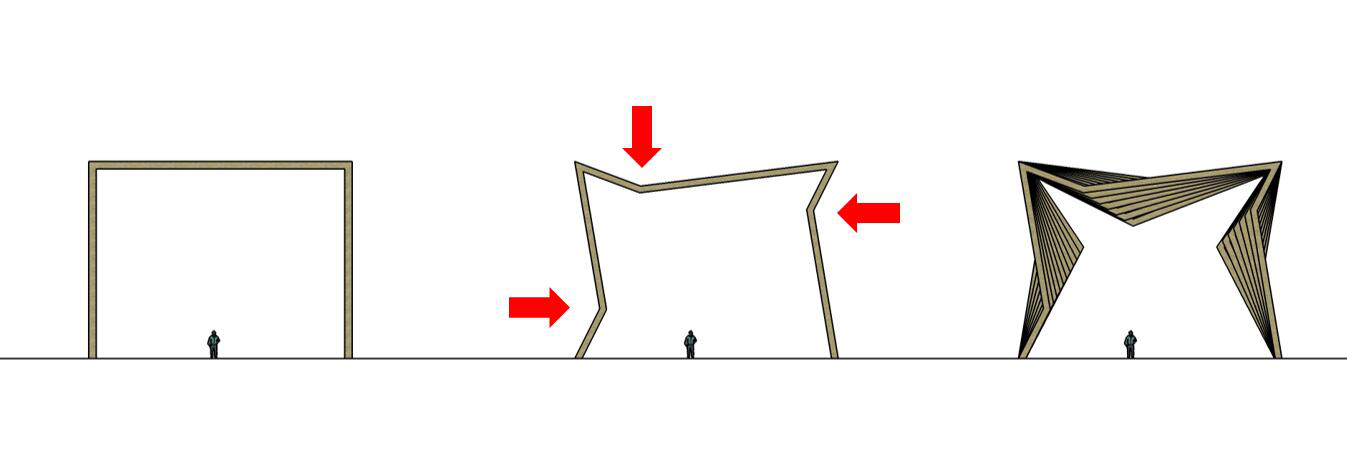
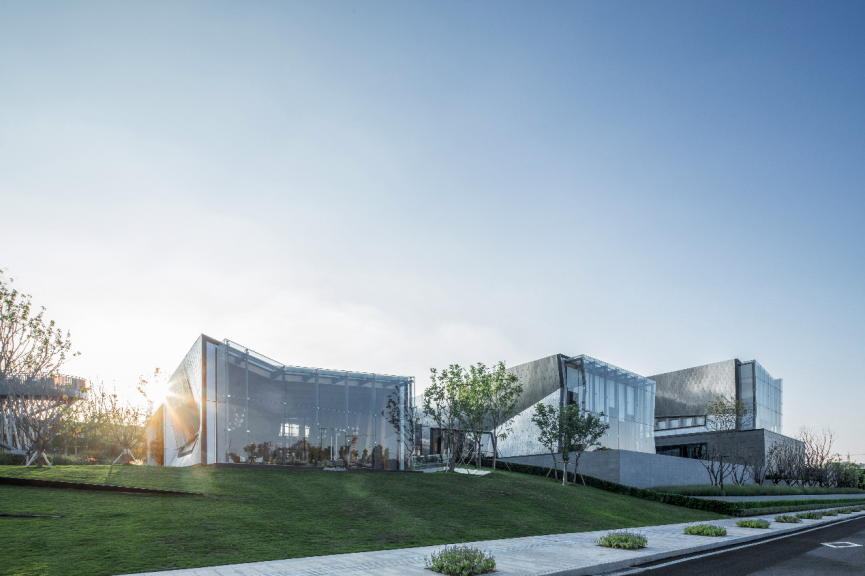
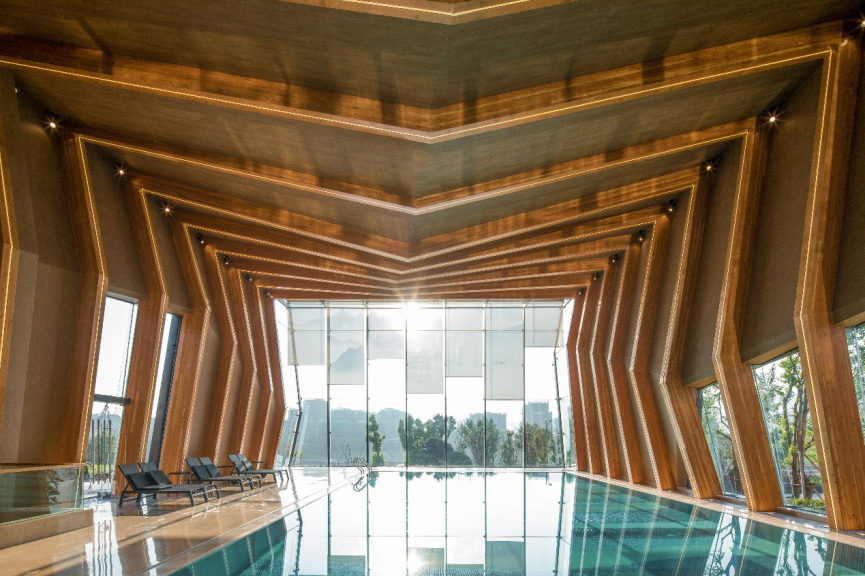
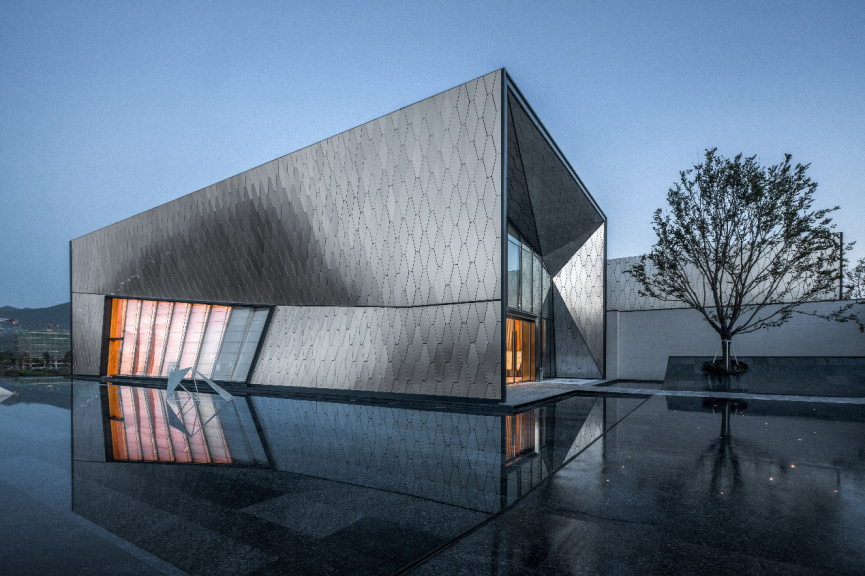
06
获得IDA年度最佳建筑设计奖对您意味着什么?
What does this recognition of winning the IDA Architectural Design of the Year mean to you?
人对美的需求是一致的,好的设计是大家都喜欢的,是无边界的。人的使用是一切建筑的最高精神价值,人们将自身的行为活动参与到建筑中,与建筑融合交织在一起,共同形成了一个生动而又具有活力的“建筑场”,是真实建筑文化与艺术价值的最高体现。建筑师在设计中起到了主导作用,得奖意味着评委会对于文化与艺术完美融合的认可。
Beauty appeals to all human beings alike. A good design pleases everyone and is border-free. Being used by people is the highest spiritual value any building can create. When human beings live or work in a building, they merge into and get intertwined with it. There then comes a jointly built, lively and energetic architectural place, which displays the authentic value of architectural culture and art to the utmost. Designers always play the leading role in architecture, and this IDA award indicates that the committee has recognized our effort to combine culture and art.
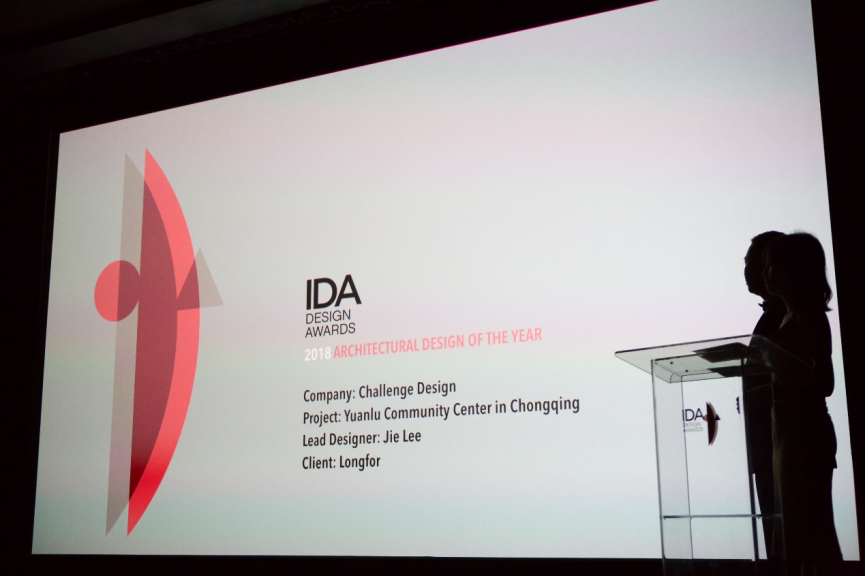
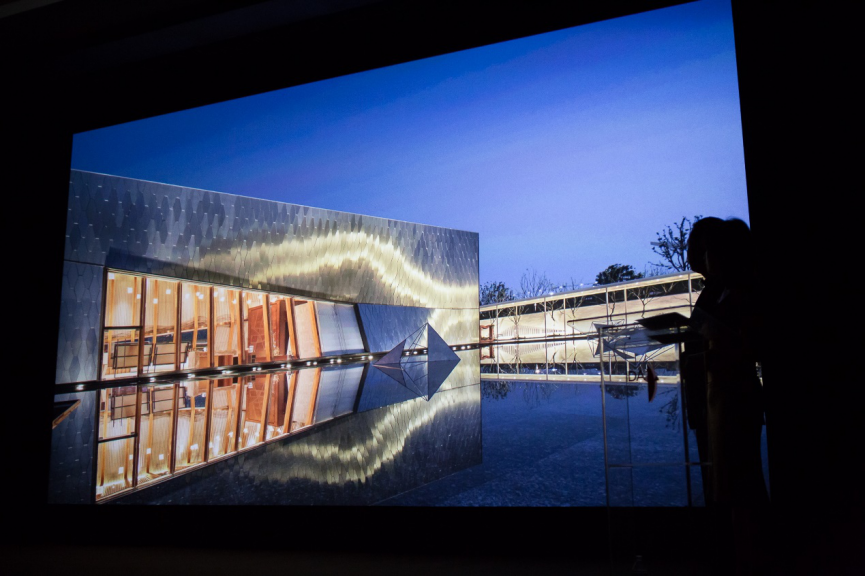
重庆是一个巨大的大都市,但人们对它的了解比北京或上海要少。这个城市的氛围是什么样的?原麓社区中心是如何融入这个环境的?
Chongqing is a huge metropolis, but people know less about it than, say, Beijing or Shanghai. What is the atmosphere in this city and how does the Yuanlu Community Center fit into this environment?
重庆位于中国西南区域,城市空间的特点一是山地城市,二是组团城市,三是有着传奇巴渝传统、近代风云留迹和当代高速发展的历时的丰富文化内含。在城市中心、副中心、滨江带、片区、社区或街区、近郊中的文化要素与单元的空间分布,体现出不同的文化特征。
建筑是一种媒介,连接着建筑与人,联系着传统与现代。重庆书院众多,书院是中国文化的根,从规划的角度我们以现代的手法打造了围合的书院。利用重庆传统的折坡屋顶秩序的形式语言转换成为建筑形体,抽取变化的单元模式转为结构构件,多片构件以秩序和变化进行排列组合。在阳光下,凛冽的金属质感与似有生命的木结构共同构筑了建筑对话的舞台。木材、钢材、铝板和玻璃迸发出强烈的对峙张力,而连接文化环境的木构架暗示着传统的空间架构、曾经的真实和时间的流逝,虚实结合、现代感与传统特质交相辉映。
Chongqing is a city in Southwest China. It is known by three characteristics: its mountainous topography, its clustered arrangement, and its rich cultural connotation that exudes from its legendary regional traditions, a lingering vestige of modern turmoil and the notable present-day prosperity. The spatial distribution of its cultural elements and units varies between its downtown, sub-downtown, riverside areas, districts, communities (or blocks) and suburbs, presenting different cultural characteristics.
Architecture serves as a medium between the art of building and human, between the traditional and the modern world. Academies of classical learning — the root of traditional Chinese culture — abound in Chongqing. In our planning we used modern techniques to create an enclosed academy by leveraging the typical sloped roofs found throughout Chongqing design, selecting several apartment buildings as a sample for its structural components and introducing a rich spatial character that appropriately integrates orderliness and variability. The hard metal and the invigorated wood structures in the sunlight seem to together formulate a stage for architectural dialogue. While the wood, steel, aluminum plates and glass break out into a tense confrontation, the wood frame, which connects to culture, implies the traditional spatial structure, authenticity echoing the past, and the passage of time. There is a combination of reality and fantasy, as well as an interaction between the modern and traditional worlds.
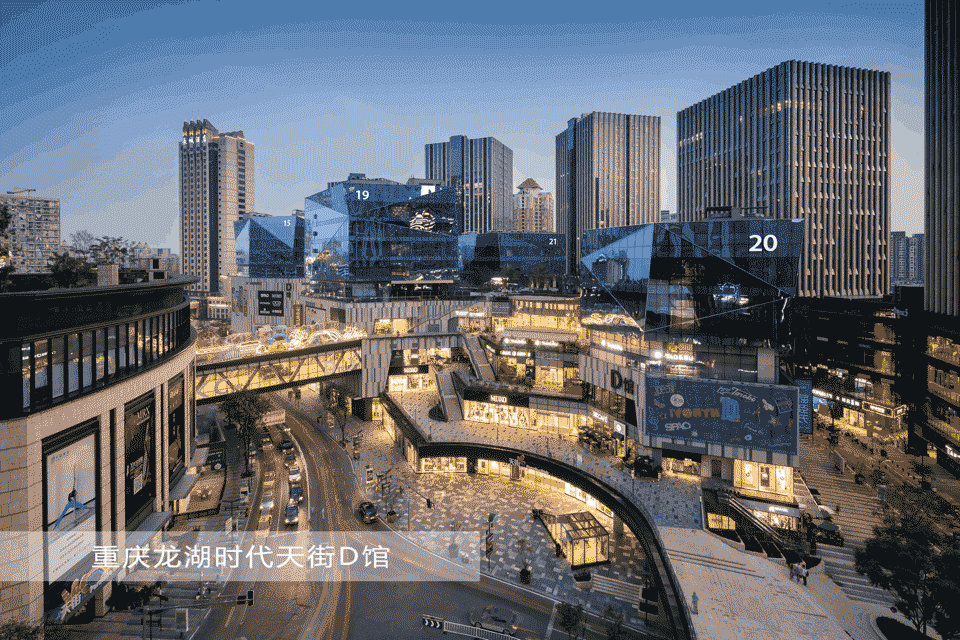
△ 成执设计重庆部分建成项目
08
成执设计的理念是什么?你在哪里从工作中获得动力和灵感?你如何决定参加某些项目?
What is the philosophy of your company, Challenge Design? Where do you get motivation and inspiration for your work, and how do you decide to take on certain projects?
成执设计立足“设计本身”,探讨空间内在深层的体验性与真实性,创造出空间多重发展的可能性,并表达出文化内涵的丰富性及时代语言的精神性。很多时候对设计的灵感来源于对真实世界的观察与探索,借用中国古典哲学理论将其归纳为“言、象、意”三个层次,三者遵循着“得象忘言,得意忘象”的哲学规律。将这些再注入空间中,使建筑有体量、有明暗、有光影、有方向。
Challenge Design focuses on design itself, and it explores the experiences in and the authenticity of the inner, deeper layers of spaces. It digs into the possibilities for manifold spatial development, and it tries to enrich the cultural connotation of architecture while conveying the spirit of the times. Our designs are often inspired by our perception of and explorations of the real world. We borrowed three terms from Chinese classical philosophy — “words, images and ideas” — and a philosophical law that reads, “Obtaining the idea lies in forgetting the image, and obtaining the image lies in forgetting words.” Then we applied this to the construction of our space to make sure our work was appropriate in size, brightness, visual effect and angling.
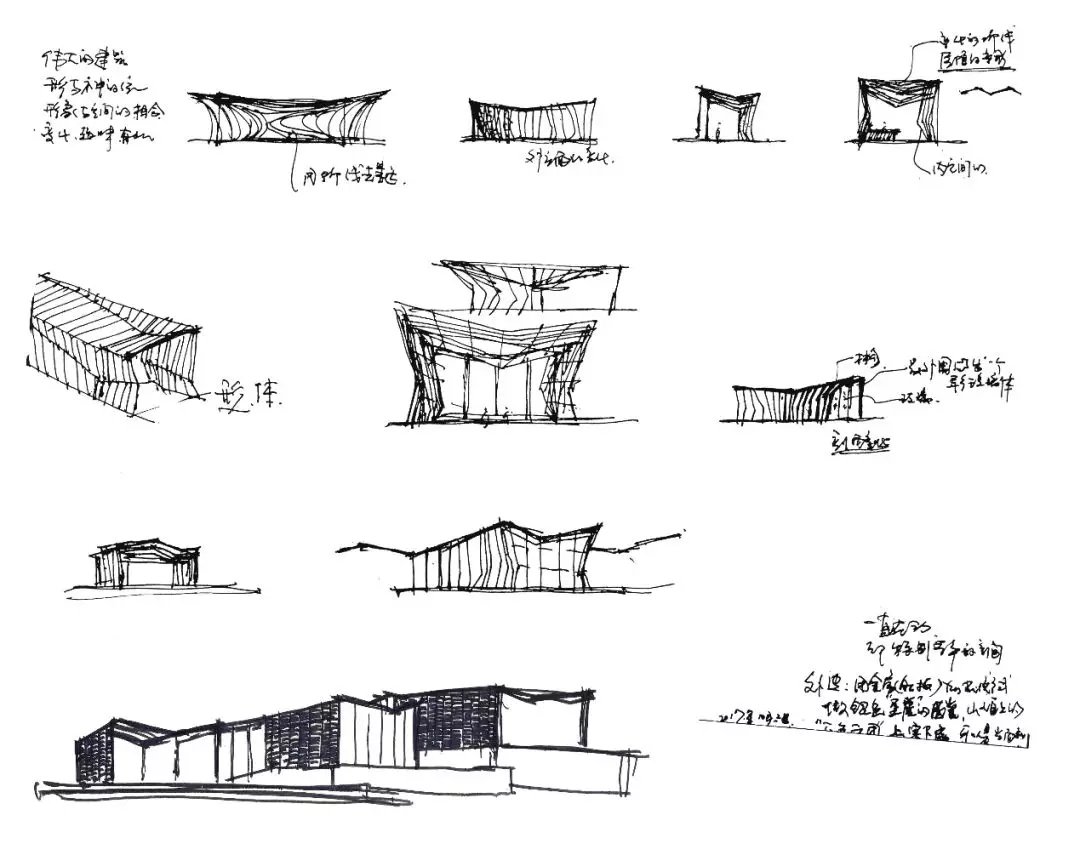
△ 原麓社区设计手稿
09
您认为现在职业生涯中最大的挑战和机遇是什么?
What do you think are the biggest challenges and opportunities in your career now?
从宏观上讲,建筑承载城市功能,表达城市文化,推动城市经济。建筑既要保证城市公共空间的界面连续与完整又要保证尺度协调和氛围融洽,诸多要素的综合调度是建筑师在设计时的难点,是个不断发现问题并解决问题的过程。
现在中国建筑创作进入了一个大规模、全类型、高速发展的时期,这使得本土建筑师有更大的创作舞台,也获得了国际上的认可,这样能更有效的激发我们建筑师的创作热情,大量优秀的建筑作品应运而生。像原麓社区这类先锋的建筑作品,他的存在虽并非主流,但有了这些探索,中国建筑创作才有了前进的方向。
Seen from a macro perspective, architecture carries urban functions, expresses urban culture and boosts urban economic development. It must ensure the continuity and completeness of the surfaces of urban spaces, coordinate their dimensions and harmoniously fit into the overall atmosphere. To handle multiple elements at the same time is a conundrum for designers, but it is also a process of continuously discovering and solving problems.
Currently, Chinese architecture is witnessing a moment of large-scale, all-encompassing, high-speed development. This provides a stage for native Chinese architects to create and win more international recognition. Their enthusiasm for design is thus effectively ignited, and they produce a large number of outstanding architectural works. Avant-garde works like the Yuanlu Community Center project don’t belong to the main stream, but they will always serve as forerunners that lead Chinese architecture forward.
10
What are you working on now? What is in the pipeline for you?
你现在在做什么?未来的计划是什么?
我们现在一直专注于对新材料的研究,以及现代建筑在结构体系、建筑空间、形式表现等方面的真实感与统一性。中国市场抛给我们越来越多的“集成化、多领域、宽范围”的设计任务,我们在探讨并重新发掘如何将中国传统木构文化与现代木构的结合,利用有机建筑将传统文脉转化为结构形式,将它们人性化,赋予它们以新鲜活力,以期达到传统文化深层次的延续。
Challenge Design keeps its focus on research into new materials and the study of how to help modern architecture achieve authenticity and uniformity in structure, space and style. As we receive more and more integrated, multi-domain and wide-ranging design tasks from the Chinese market, we begin to consider and try combining the traditional culture of wood structures with modern wood structures, converting traditional culture into a visible structure by virtue of organic architecture. We humanize such materials and inject life into them in the hope of carrying forward traditional Chinese culture on a deeper level.
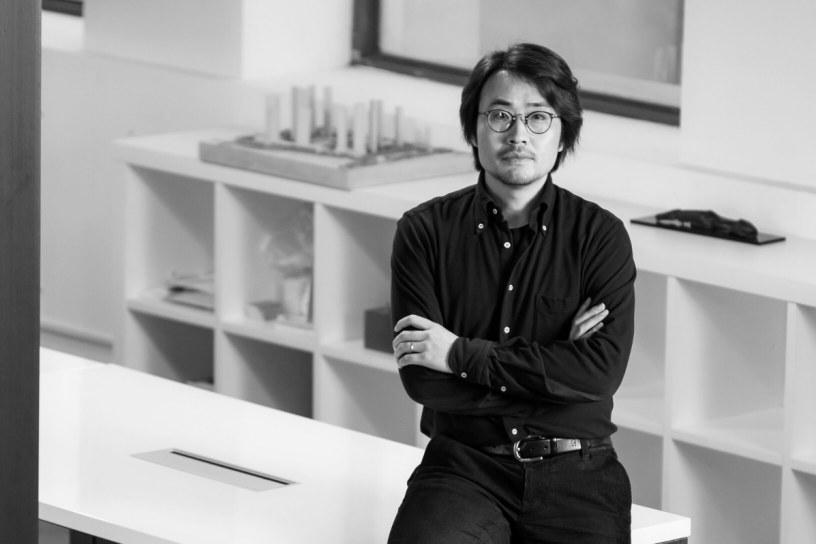
△ 成执设计创始人、总建筑师李杰先生

